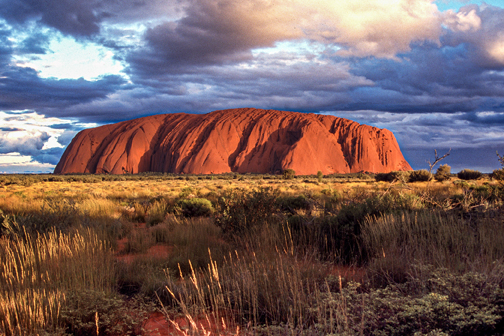
Dangerous highway, bottlenecks and bridges
N 23°30'37.6" E 150°16'05.8"
Day: 247 Stage three / total expedition days 638
Sunrise:
05:28
Sunset:
18:50
As the crow flies:
24,4
Daily kilometers:
35
Total kilometers:
6858 km
Temperature - Day (maximum):
37° degrees, sun approx. 57°
Temperature - Night:
20°
Latitude:
23°30'37.6"
Longitude:
150°16'05.8"
Old school camp – 19.01.2003
We leave the great Fitzroy River behind us and march along the last dirt tracks towards the Capricorn Highway. Without question, our goal is within reach. After so many years, we can hardly comprehend reaching the outskirts of the coastal town of Rockhampton tomorrow. About five kilometers before the busy highway, we turn onto another road. This saves us another 10 kilometers of the unsightly asphalt strip on which the road trains are at home. More and more houses are now appearing to the left and right of the track. People stand on the veranda and wave to us in a friendly manner. Sometimes a car follows us. “Are you the two crossing Australia on foot?” “Yes,” we answer with a laugh. “I read about you in the newspaper just a few days ago.” “That’s possible,” I reply and lead our brave Sebastian on. We walk through a lovely valley, which reminds me of the German Alpine foothills. “Look, can you see that ugly building on the horizon?” I ask Tanja. “My God, it looks terrifying,” she replies, shaking herself. An hour later, we realize that it is a coal-fired power plant. Thick, toxic clouds of smoke rise into the sky from the chimneys of the power station, merging with the low-flying rain clouds. Together they travel across the beautiful valley. The contrast to the Australian wilderness, the bush and the loneliness is downright shocking. Struck by the sight, we walk towards the ugly chimneys.
At the last house before the highway, we ask a man if we can spend the night in one of his enclosures. “Down there on the highway is the old school in Kalapa. There’s also a sports field there. It would be ideal for your camels. If you want, you can set up camp there,” he says, to which we say thank you and accept his offer.
After unloading, our hungry boys fill their bellies with the juicy fresh grass. As soon as I have set up our mosquito tent, Darren, the nice farmer, comes by. “I thought I’d see if you could manage here?” he asks. Then he shows me where we can water our animals and get rainwater for ourselves. “Do you drink beer?” Darran asks. “If we have the opportunity, of course,” we reply. “I’ll come by again and bring a few bottles,” he chats cheerfully and disappears.
In the meantime, we make ourselves comfortable in our camp chairs, cook the billy and watch the traffic whizz by. The sports field is located directly on the Capricorn Highway and the railroad line. Every 20 minutes, a train with a hundred wagons loaded to the brim with coal thunders past. Darren told us that there are 120 tons of coal in each of these wagons. The railroad line is in operation 24 hours a day. We learn that coal is one of Australia’s most important natural resources.
When Darren turns up at camp again, he actually brings a few beers with him. We talk about the expedition and our destination, the Pacific Ocean. “How are you actually going to get there? You can’t just walk along the highway with the camels, can you? There are several bridges and bottlenecks between here and Rockhampton.
There will be no room for your caravan next to all the cars, especially the Rodtrains. I wouldn’t even venture along there with a well-trained horse,” he warns, making my hair stand on end. “Is there no way around these bottlenecks?” I ask, putting down my beer because I’ve immediately lost my appetite for it. “If you want, I can drive you quickly to the turn-off. I mean where you have to leave the highway in the direction of Paradise Lagoons,” he offers me. “I’d love to. That’s a fantastic suggestion,’ I reply.
A little later, I’m sitting in Darren’s jeep to explore the first 20 kilometers of tomorrow’s route. In fact, it is impossible to cross one or the other bridge with camels. Darren suggests a detour that takes us around the big, ugly power station. “That’s what we’ll do. What’s a 10-kilometre detour if we can avoid an accident,” I say contentedly.

